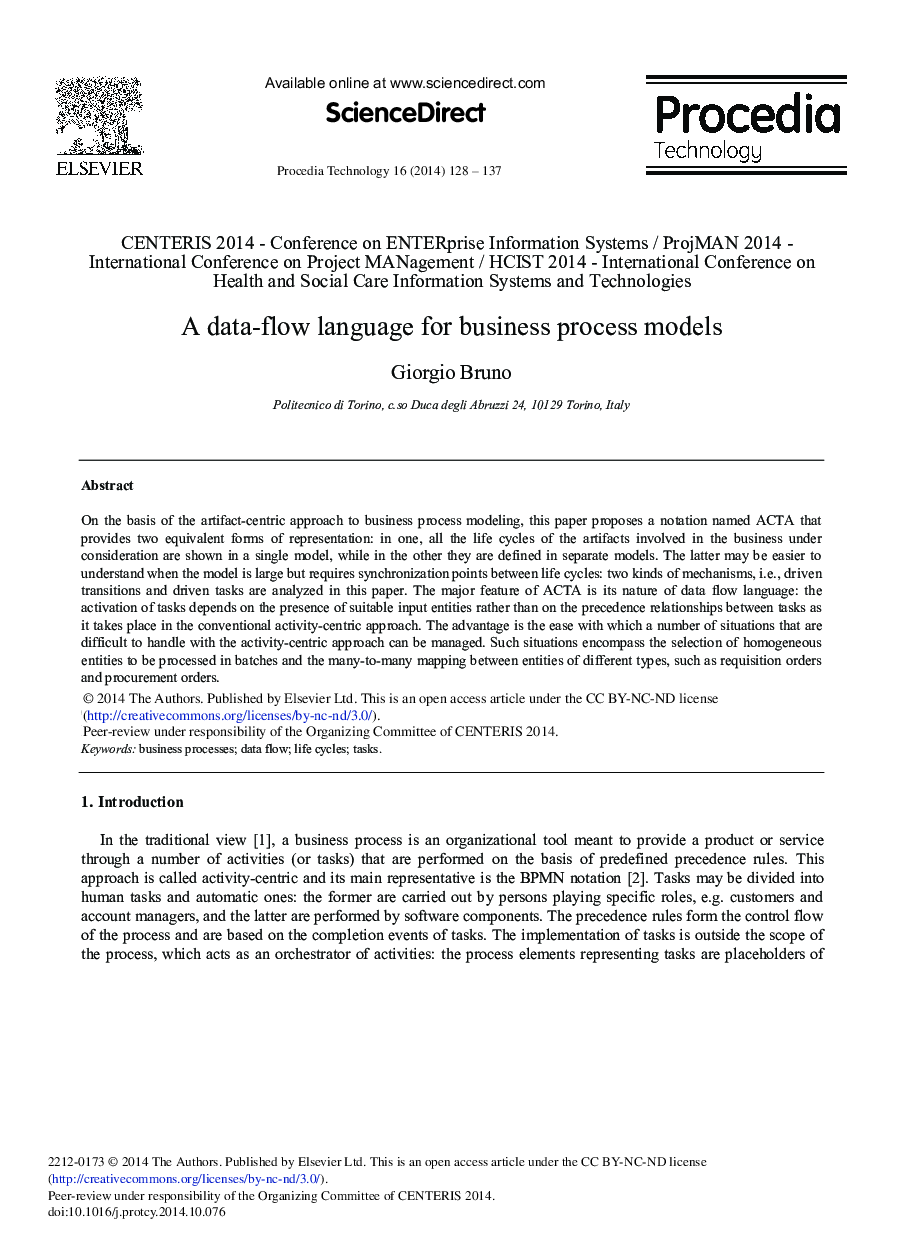| Article ID | Journal | Published Year | Pages | File Type |
|---|---|---|---|---|
| 491170 | Procedia Technology | 2014 | 10 Pages |
On the basis of the artifact-centric approach to business process modeling, this paper proposes a notation named ACTA that provides two equivalent forms of representation: in one, all the life cycles of the artifacts involved in the business under consideration are shown in a single model, while in the other they are defined in separate models. The latter may be easier to understand when the model is large but requires synchronization points between life cycles: two kinds of mechanisms, i.e., driven transitions and driven tasks are analyzed in this paper. The major feature of ACTA is its nature of data flow language: the activation of tasks depends on the presence of suitable input entities rather than on the precedence relationships between tasks as it takes place in the conventional activity-centric approach. The advantage is the ease with which a number of situations that are difficult to handle with the activity-centric approach can be managed. Such situations encompass the selection of homogeneous entities to be processed in batches and the many-to-many mapping between entities of different types, such as requisition orders and procurement orders.
